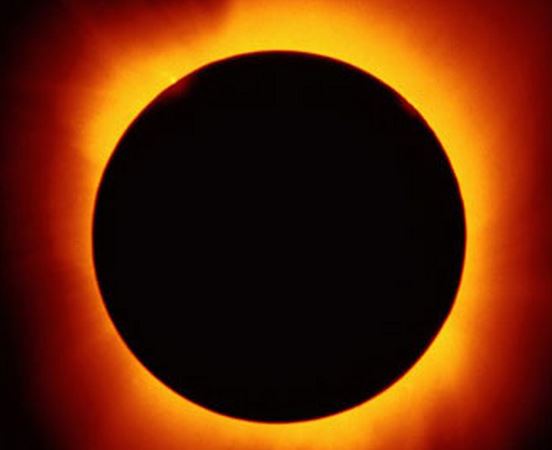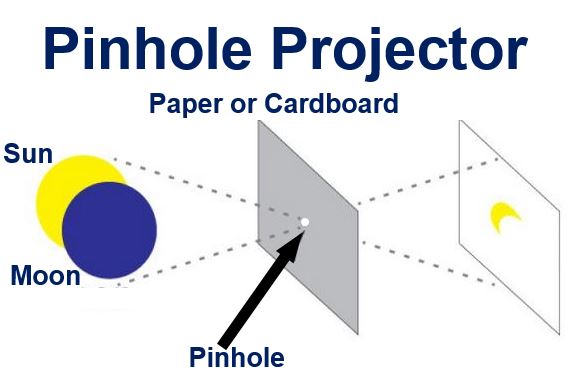Authorities in the Faroe Islands, located between Norway and Iceland, say all its hotels, bed & breakfasts and hostels are fully booked for 20th March, when a total solar eclipse will occur. However, several households have offered themselves as host families, and vacancies with them are still available.
The whole of Europe, North and West Africa, and Northern Asia will experience partial obscuration (darkening) on March 20th, but at the Faroe Islands it will be 100% for a period of about 2.5 minutes at 9.41am.
The only other place to experience a total solar eclipse on that date is Svalbard, a group of islands halfway between continental Norway and the North Pole.

On March 20th, total solar eclipse day, there will be several celebratory events on the Faroe Islands.
According to the Faroe Islands Tourist Board:
“The event will be celebrated by the Faroese and tourists all across the country. After the solar eclipse, the remainder of the day will be packed wth a wide variety of cultural- and musical events, tours, activities and opportunities to try local Faroese foods, among other things.”
What is a solar eclipse?
A solar eclipse occurs when the Moon comes in between the Earth and the Sun, and blocks the light from the Sun.
The Moon casts two shadows on the surface of the Earth during a solar eclipse:
– The umbra, which is smaller, and completely dark.
– The penumbra, which is larger, but less dark.
The UK will be covered by the penumbra on March 20th, while the Faroe Islands and Svalbard will be in the umbra.

During a solar eclipse, the Moon casts two shadows on the Earth’s surface, the totally dark umbra and the semi-dark penumbra.
Legends of peace and love associated with solar eclipses
The Faroe Islands is full of solar eclipse legends spanning centuries. There is one tale of four shepherd brothers on 30 May 1612 in the village of Sumba at the most southern point of the Faroe Islands.
They used to quarrel incessantly, but at 11.25 am one day, sudden darkness (partial solar eclipse) descended upon them while they were tending to sheep in the mountains.
The brothers promised to God that they would become better men if they survived what they thought was the end of the world. When the Sun came out a few minutes later, they hugged each other and never quarreled or fought again.
For any given region on Earth, a total solar eclipse only occurs once every 375 years. The Faroe Islands Tourist Board says “Total solar eclipses are one of the most spectacular astronomical and natural phenomena one can experience.”
Obscuration in the UK
Obscuration in the UK will range from 98% in the Isle of Lewis in the Outer Hebrides in Scotland, to 85% in the southern tip of England.
There will also be a Supermoon at the same time. This is when the Earth and Moon are as near to each other as possible. The Met Office says that when a Supermoon coincides with a solar eclipse, the event is called a Supermoon Eclipse.
The Met Office says the total eclipse in the Faroe Islands will last exactly 2 minutes and 24 seconds, while the partial eclipse in the UK will start at 7.41am and end at 11.50am.
The next partial eclipse over the UK will be on August 11, 2026, astronomers say.
According to the British Astronomical Association:
“An obvious partial eclipse will be visible from every country in Europe and the partial phase will also be seen from places as widely spread as Newfoundland, North Africa and north-western Asia.”
Solar eclipse and protecting your eyes
The US space agency NASA has the following advice regarding solar eclipse safety:
“The Sun can be viewed safely with the naked eye only during the few brief seconds or minutes of a total solar eclipse. Partial eclipses, annular eclipses, and the partial phases of total eclipses are never safe to watch without taking special precautions.”
“Even when 99% of the Sun’s surface is obscured during the partial phases of a total eclipse, the remaining photospheric crescent is intensely bright and cannot be viewed safely without eye protection.”
The following quote comes from the BAA’s Solar Safety Code:
“DON’T view the Sun through sunglasses of any type (single or multiple pairs), or filters made of black & white or colour photographic film, or any combination of photographic filters, crossed polarisers or gelatin filters, CDs, CD-ROMs, or smoked glass. These are NOT safe.”
“DO view the Sun ONLY through special filters made for safe solar viewing, e.g. aluminised mylar filters, or black polymer filters, identified as suitable for direct viewing of the Sun, bearing the CE mark AND a statement that it conforms to European Community Directive 89/686/EEC, or use a welder’s glass rated at No. 14 or higher. Always read and follow the manufacturer’s instructions carefully.”
If you are in charge of young children, remember that the temptation to look up directly at the eclipse with no protection is greater for them than for adults, regardless of repeated warning. Do not let young children enjoy the solar eclipse unsupervised.
Enjoy the eclipse with a pinhole camera
Using a pinhole camera (pinhole projector) is a fun and safe way of enjoying a solar eclipse. All you need are two sheets of white paper (or white cardboard), and a pin.
Make a hole in the middle of one of the white sheets with the pin. Make sure it is round and smooth with no rough edges.

Children enjoy making and using a pinhole camera.
Hold that paper with the hole up towards the Sun, and the other one a couple of feet away below it. Move them about until you see an inverted image of an eclipse on the sheet with no hole.
While doing all this, have your back to the Sun to protect your eyes.
Young children will need to be supervised while using the pin.
Video – Animation of 2015 solar eclipse viewed from UK

